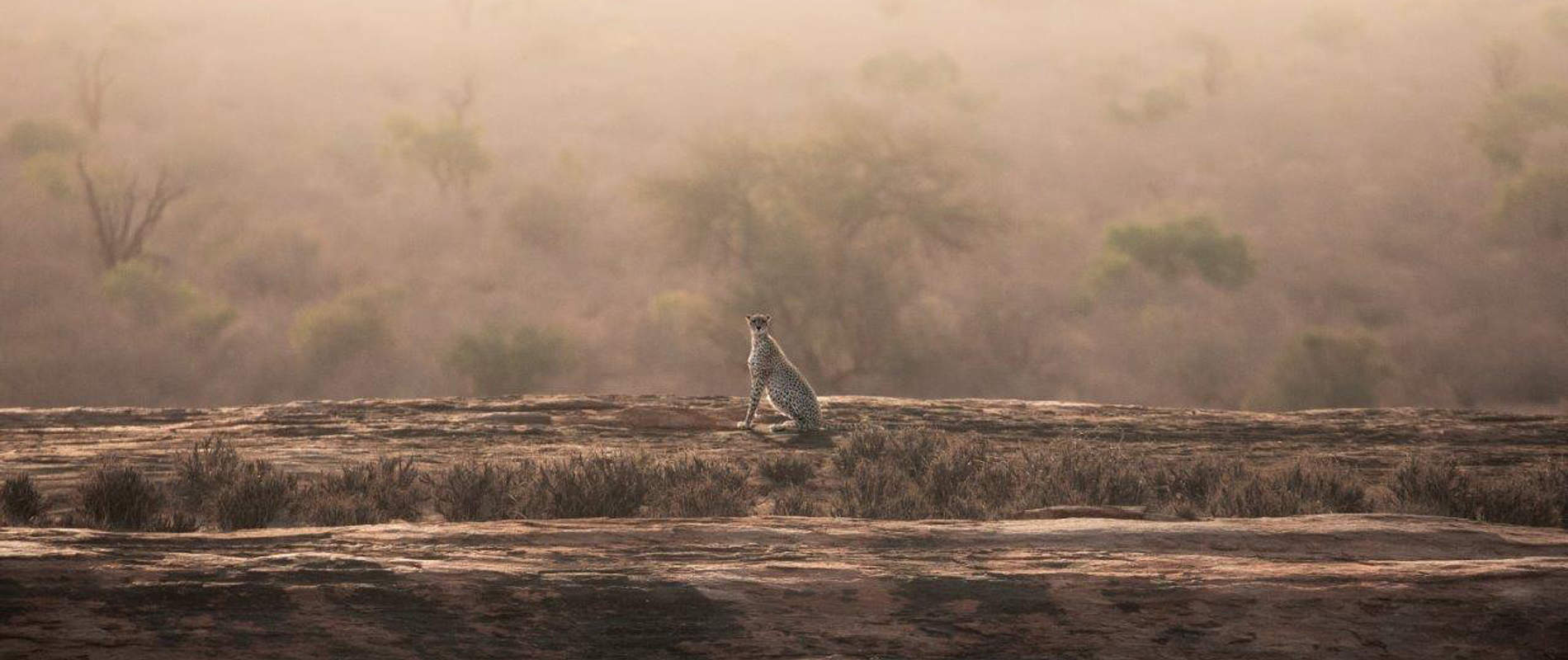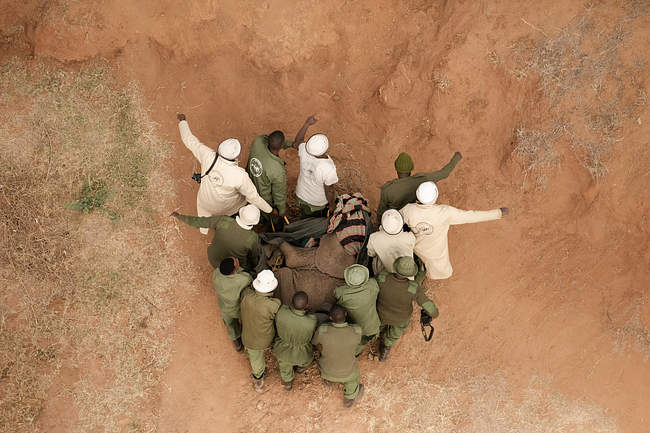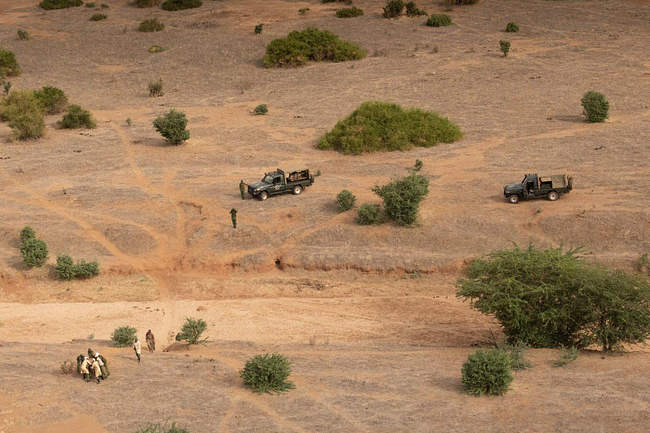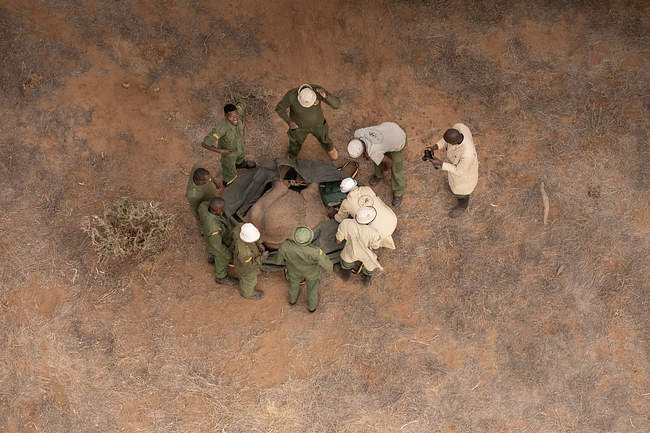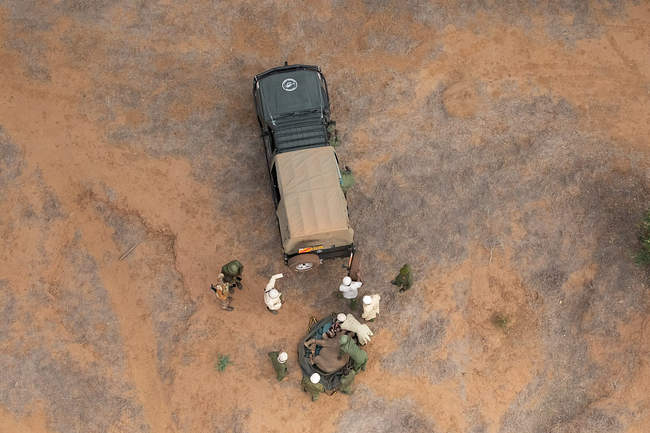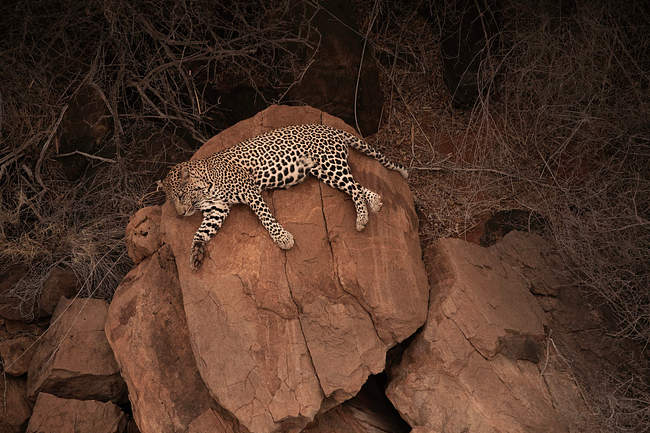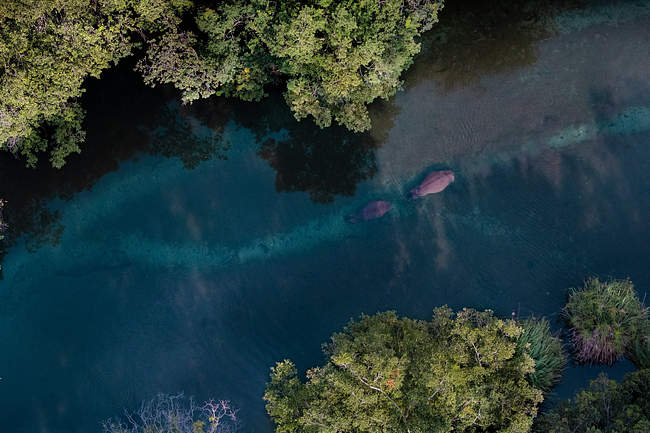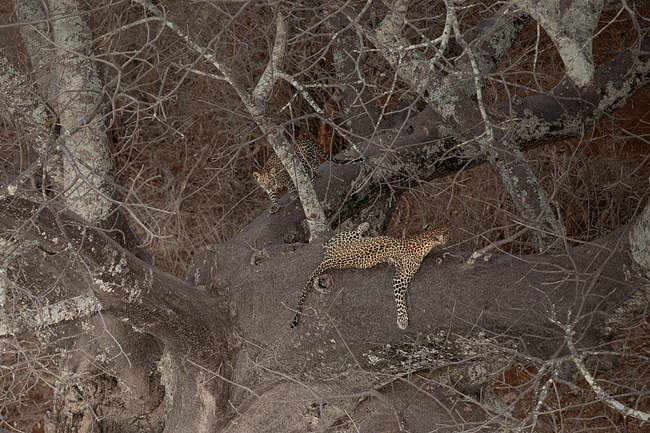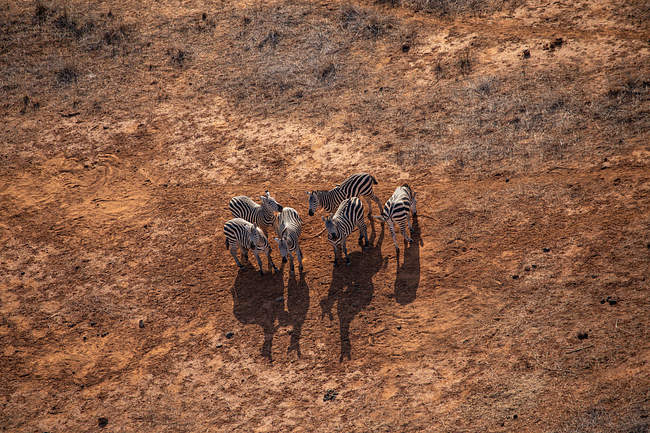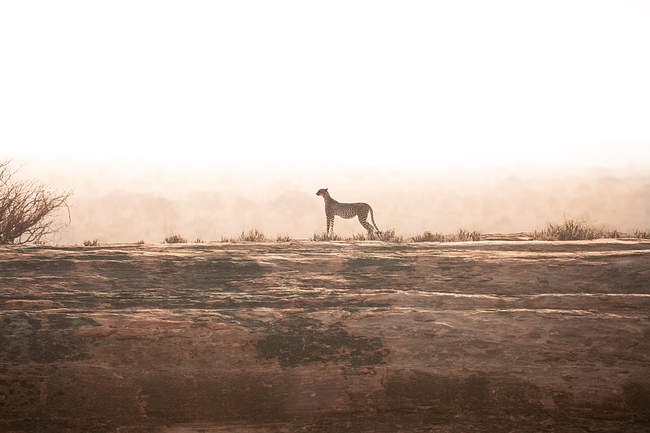We are witnessing more and more signs of the devastating toll the present drought is having in Tsavo and across many parts of the country and are experiencing extremely challenging conditions that come with heart-breaking scenes daily.
Despite this, efforts to keep illegal livestock out of the National Parks continue to be successful in Tsavo East, the Chyulu Hills and the Northern Sector of Tsavo West. Only relatively small numbers of cattle and other livestock were observed in these areas and dealt with swiftly by KWS rangers on the ground. In the Southern Sector of Tsavo West, however, livestock remains a problem and the evidence of degradation is clear, with large numbers of both livestock and wildlife now dying in the Park through lack of food.
This lack of food has also led to a dramatic increase in abandoned and/or collapsed elephant calves in the Park and surrounding ranches. The Aerial Unit was involved in five orphan elephant rescues during the month, including on two occasions 2 calves rescued on the same day. The first two were both sighted during a routine aerial patrol along the Voi River, each wandering alone. with no sign of other elephants. Nearby ground teams were called in to confirm the baby elephants were on their own before rescues were mounted. Their very poor condition suggested they had been without their mothers’ milk for a long time. One of these calves was taken to the Trust's Voi Reintegration Unit, while the other, named Weka, went to the Nairobi Nursery.
The other pair of elephants that were both rescued on the same day were in the Amboseli ecosystem. These two were both found in a collapsed state. Despite all odds both have made a recovery. The fifth elephant calf was also found collapsed next to the Rombo River by Big Life rangers and was flown to the Trust's Umani Springs Reintegration Unit for care, named Kapei, he is doing well. In addition to these unfortunate elephant calves, an abandoned rhino calf, which had been mauled badly by hyenas, was reported, and rescued by the SWT helicopter. She was flown directly from site to our Nairobi Nursery where she is recovering.
Four adult elephants were also rescued from a drying dam south of Tsavo, near the Tanzania border, where they had become stuck in mud on two separate occasions. On 3rd September two females had become trapped, then on 9th September a mother and her calf needed to be freed. After these double rescues, the SWT proactively funded the dredging and grading of the dam in preparation for the next rains, ensuring it would no longer be a death trap for elephants. Every single vet case attended to with aerial assistance during September involved snared wildlife. A snared bull elephant near Lukenya University on the border of Tsavo East was successfully darted, released from his snare, and treated. Another elephant was found snared to a tree by Wildlife Works. Two snared giraffes were also attended to, the first on Sagalla Ranch and the second in Ishaqbini Conservancy, on the Tana River, to the north (watch the team in action). Even further afield, the Aerial Unit was asked to respond to a snared and limping buffalo on Manda Island near Lamu.

One of the most challenging tasks of this dry season has been dealing with almost daily fires in the Chyulu Hills. Our aircraft were involved in supporting firefighting efforts on several occasions, some of which burned for days at a time. Firefighting in the Chyulus is a demanding job, and at times heart-breaking. Success is often followed by additional fires being set – as many as seven (7) at a time this year. Fires are mostly set by livestock herders, clearing old grass before the expected rains, to optimise grazing conditions for their livestock, and sometimes by poachers - either to aid in their poaching activity or to create a distraction for law enforcement.

An Airtractor, on standby thanks to funding from the Chyulu Hills REDD+ Project, carries out a water drop
Human-elephant conflict was also prominent in September. Seven cases were attended to by helicopter, two of which were supported by a fixed-wing spotter. Logging activity was noted both in the Northern Sector of Tsavo East and in Arabuko-Sokoke Forest. Charcoal burning was primarily noted on Galana and Kulalu Ranches.

Two elephant carcasses were discovered in September during aerial patrols. One of these was carrying large ivory and was thought to have died of natural causes. The other carcass had had its tusks removed and was likely poached.
Highlights included a usual increase in big cat sightings during the dry season as well a large pack of 15 wild dog on the Yatta Plateau.
